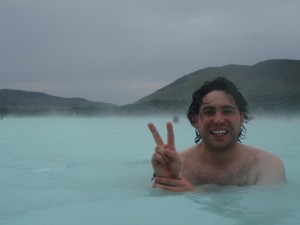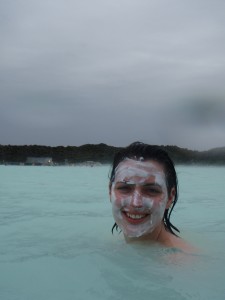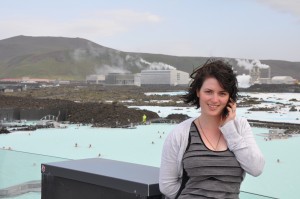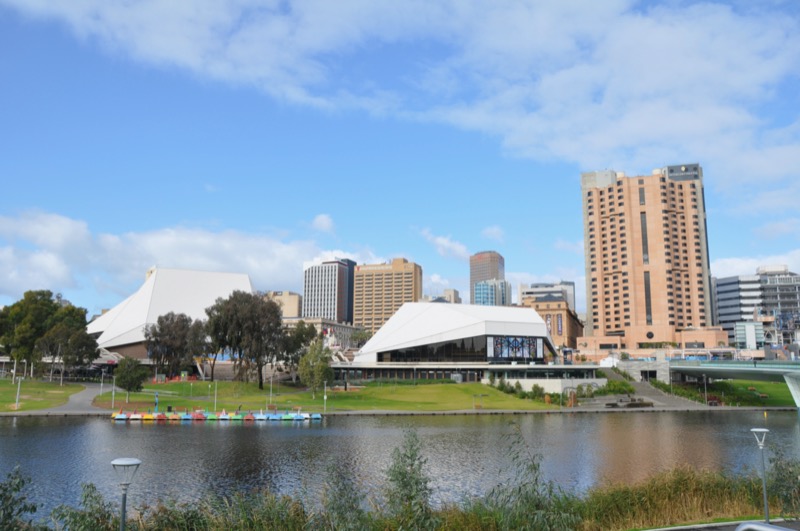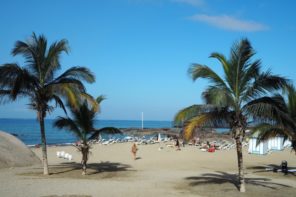On our third and final day in Iceland we were picked up early outside Guesthouse Pavi (feeling not at all sad to leave the humble lodgings) by a bus which took us to the infamous Blue Lagoon.
Following the instructions of the staff, we collected our wristbands, which would allow us to pay for food or drinks at the bars in the Lagoon, headed to our respective changing rooms, showered naked in a disconcertingly open-plan shower area, put on our swimming gear and headed outside to brave the wind and cold before slipping into the warm, blue, steaming waters of the Blue Lagoon.
The water was surprisingly salty; we found out that it is 1/3 salt and 2/3 fresh water that seeps upwards from 2000 metres below the Earth’s surface and is renewed every forty hours. There is no need for chlorine or any other chemicals in this mineral-enriched water, as common bacteria do not exist in the Lagoon.
The minerals and silica that are found in the waters of the Blue Lagoon are said to have healing properties as well as being great for the skin. Silica mud is kept in boxes around the edge of the Lagoon, where you can scoop a handful of the thick white paste and spread it onto your face, neck and shoulders as you would a cosmetic masque.
As well as floating and relaxing in the milky blue water, you can also experience some extreme steam in the sauna, enjoy an invigorating waterfall massage, book a spa treatment or have a drink at the swim-up bar (note: don’t drink the ‘energy shot’. It is foul). The Blue Lagoon was our Icelandic highlight – the time we spent there was so relaxing and unlike any other experience we’ve had. We recommend at least half a day here either on your way to or from the airport (it’s cheaper this way and the bus company* will store your luggage for free).
*Netbus is my recommendation; it is cheaper than Flybus and offers the same service.

